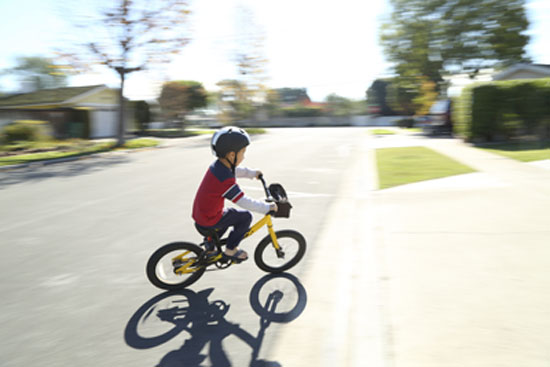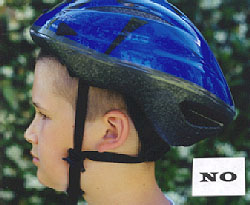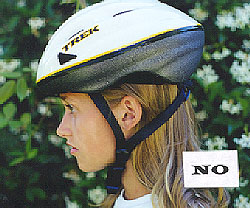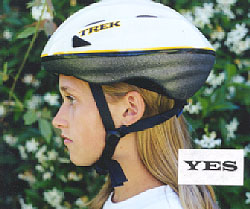For more inquiry or need more support,please leave the message and write down your contact information,we will get back to you soon!
News Detail
How to Wear a Bicycle Helmet Correctly
More and more people are heeding the advice of their doctors to stay “well” by eating healthy foods and exercising regularly. To take advantage of the great outdoors and beautiful areas of open space, many people choose bicycling. Every generation can be seen joining in the fun – and sharing the benefits of biking – whether it’s a preschooler on his or her first tricycle, children heading off to school, a cycling group heading off on a ride, or a family riding together on the weekend.

As bicyclists have literally “taken to the streets” (and elsewhere), along with the fun comes the responsibility to ride safely. Sharing the road with automobiles provides an obvious safety concern for any cyclist, but any “crash” or fall from a bicycle (regardless of cause) has the potential to cause injuries, the most serious of which are head injury, brain damage and death. Ongoing efforts to prevent such accidents include creating and maintaining safer bikes, educating riders and drivers alike, and better/safer road designs for everyone. But should a crash occur, the single most effective safety device available to reduce head injury and death is a properly worn bicycle helmet with lights.
While more people are wearing helmets than before, the majority of helmets are not being worn correctly (therefore, they are unable to offer the rider full protection), and a disturbing number of parents ride without helmets (while insisting that their children do!).
The Facts Are In:
Bicycle helmets can reduce the risk of head injury by as much as 85 percent.
Bicycle helmets can reduce the risk of brain injury by as much as 88 percent.
It is estimated that 75 percent of bicycle-related deaths among children could be prevented with a bicycle helmet.
Universal usage of helmets by children ages 4 to 15 could prevent as much as 155 deaths and 45,000 head injuries per year in the United States.
Does the Helmet Fit?
The helmet needs to sit squarely on the head, with the front of the helmet low on the brow, protecting the forehead.
Side straps should be fastened securely just below and forward of the ears. There should be no slack in the system when the chin strap is fastened. If a helmet is worn too loosely, it slides back (exposing the forehead) or falls off in a crash.
Check your helmet position and fit by looking in a mirror. Gently rotate the helmet on your head, front to back, and side to side, noticing the skin in your brow area. If the fit is comfortable, and the skin moves with the helmet, you have a proper fit. If not, your helmet is too loose – try the adjustment steps again.
When in doubt about your family’s helmets, visit your local, reputable bicycle shop. Experts there can assist you with fitting or, when necessary, direct you to a new helmet. If your old helmet cannot maintain its fit, it should be replaced.
Parents: Wear Your Helmets Too!
Studies have also found that if parents wear helmets when they bicycle, then about 98% of kids wear helmets. If the parents don’t wear helmets, it drops to 30%. When parents wear their own helmets – with every ride – this simple act sets a powerful example and directly affects the safety of their children.
The Do’s and Don’ts of Correct Helmet Fit:

Helmet is placed too far back, exposing the forehead. Straps are not secured correctly.

Helmet is placed too far forward, exposing the back of the head. Straps are not secured correctly.

COOL! – Helmet is positioned correctly. Straps are buckled snugly under the chin.

--- The above instruction helps you for wearing helmet correctly! ---